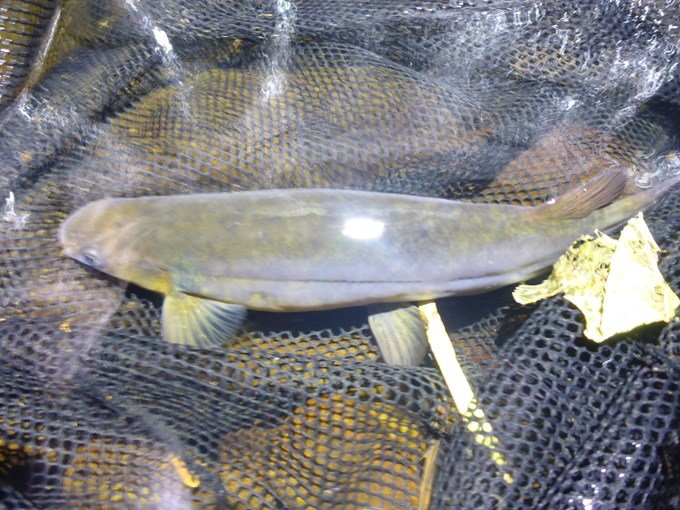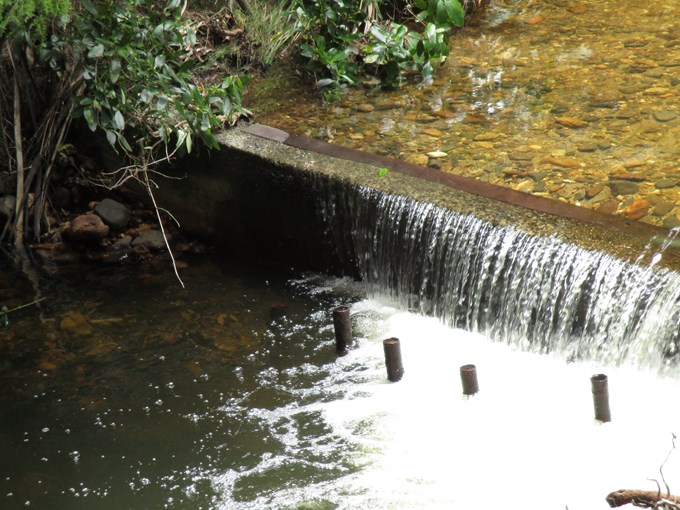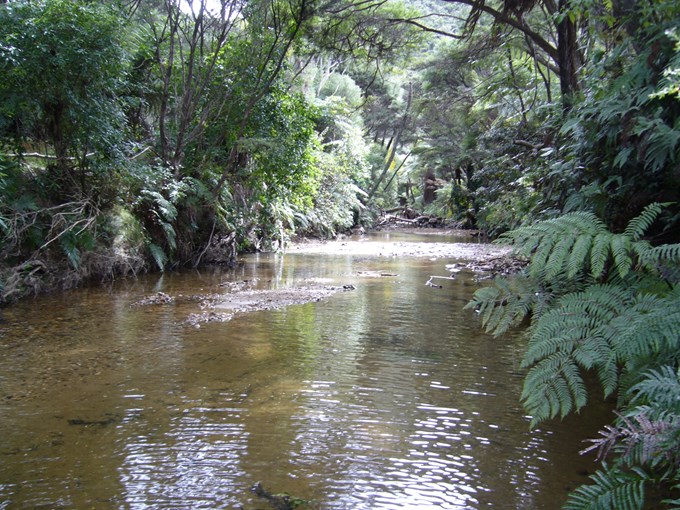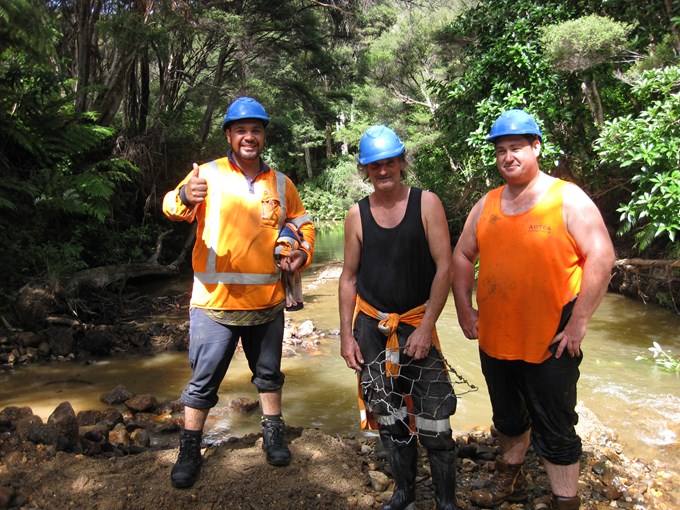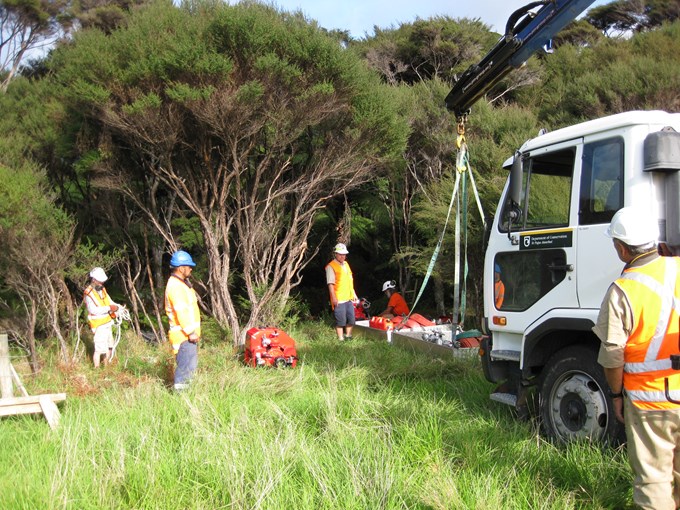About 19km of isolated stream habitat on Aotea Great Barrier Island is accessible to native fish for the first time in three decades, thanks to local residents and public agencies.
Now, native fish returning from the ocean will again occupy habitats and boost population numbers along a relatively protected and pristine Great Barrier waterway.
A recent two-day operation saw a 30-year-old flow-gauging weir – a large, concrete structure – removed from the Awana Stream, one of the island’s largest waterways.
In the six weeks since the weir’s removal, fish life has begun to return to Awana Stream, and there's hope that some endangered species may restart building their population on the island.
The video above shows how a concrete weir in Titirangi prevents small fish from moving freely along waterways.
History of the weir
The weir was installed by the National Institute for Water and Atmospheric Research (NIWA) in the late 1980s (NIWA also paid for its removal).
After decommissioning, the weir remained largely forgotten.
That was until residents Bill Carlin and June Brookes attended a Great Barrier Local Board and Department of Conservation (DOC) event in 2015 called Aotea: Ridge to Reef.
At the meeting, Bill and June heard about how structures like the weir can prevent juvenile native fish, which swim in from the ocean, from reaching freshwater habitats.
June says the event alerted her to the potential ecological damage being caused by the weir, and she started talks with DOC, NIWA and Auckland Council on removing it.
“As the landowners, with a lifelong commitment to conservation, we felt we had an obligation to help fix this problem,” June says.
“It was lucky we knew the history of the weir’s construction and were able to assist with providing information to Auckland Council and DoC.”
Inspiring change
Sue Daly, Great Barrier Local Board’s environment spokesperson, says this project may inspire other landowners on Aotea Great Barrier to reinstate fish passage in waterways on their property that may be made impassable by pipes, dams and weirs.
“We didn't know how much of a barrier dams and fords were to migrating freshwater fish – and we didn't know these fish were whitebait!” Ms Daly says. “We really want to make sure every stream everywhere on our island is fish-friendly.”
The section of Awana Stream, where the weir was located, runs through both DOC land and Bill and June’s property.
Matt Bloxham, Auckland Council’s senior freshwater adviser and the project organiser, says fish would still be barred from the stream if it wasn’t for June’s initiative and resolve to see the weir removed.
“Whitebait species, such as īnanga, koāro and banded kōkopu, were found to be restricted to areas just downstream of the weir,” Matt says.
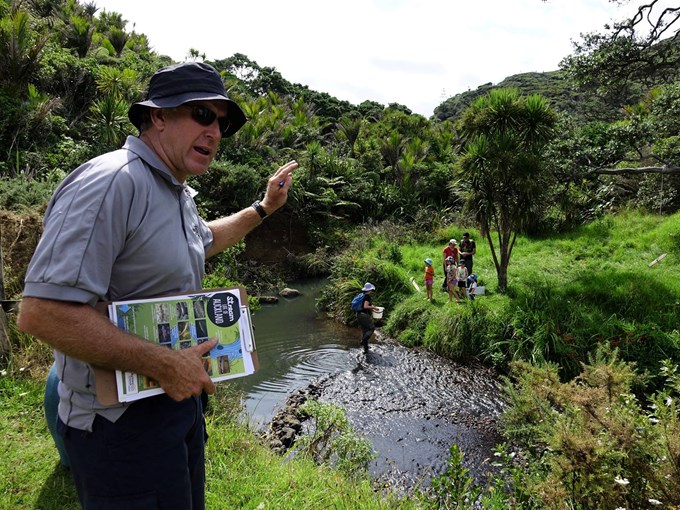
“This is in no way surprising for īnanga, which cannot climb.
But we didn’t anticipate that the weir would spell trouble for koāro and banded kōkopu, as both are very capable climbers and will scale 20-metre-high waterfalls as juveniles to reach upstream habitats.'
“However, gauging weirs concentrate flows through a V-notch and it may be that the overwhelming volume and velocity of water barrelling through the notch was enough to knock the fish back as they reached the top of the weir.”
Aotea bands together
Matt says of the project: “The Awana work was a great example of government agencies, private contractors and landowners on the island pulling together to achieve substantial environmental gains."
DOC's Aotea Great Barrier Island Operations Manager Paul McArthur agrees. ”We can definitely do more to help our native species thrive when we work together. I want to thank Bill and June for getting the ball rolling on this project. Removing this weir will help increase the number of īnanga, koāro and banded kōkopu in this catchment, which is a very important habit for these native fish.”
NIWA freshwater fish expert Dr Paul Franklin says the project showed what could be achieved when people came together to improve the environment.
“Removing barriers can be one of the most cost-effective ways we can help our freshwater fish communities. Many of our native fish are threatened and ensuring they have the access they need from the sea to freshwater habitats is crucial to improving their chances of survival.”
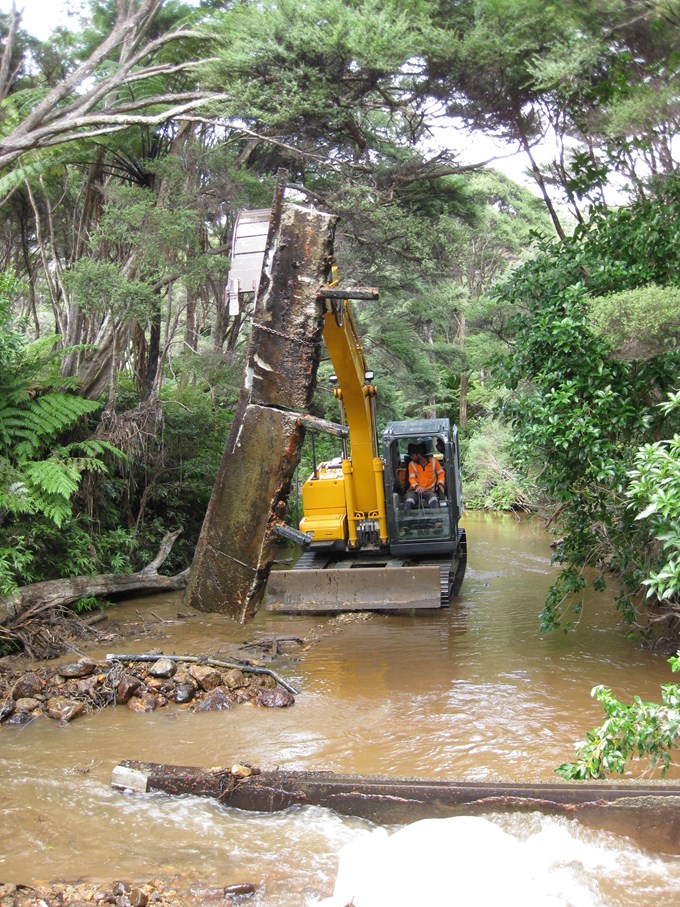
When living on an island as remote as Aotea Great Barrier Island, obtaining all the gear necessary for a job like this requires plenty of planning and cannot be achieved without pooling resources.
Local business Aotea Contractors, led by Joel Eves, and the Rural Fire Service brought in the necessary machinery to break up the weir. DOC and the Rural Fire Service supplied and operated the pumps, which lowered water levels to minimise environmental impacts.
“This, combined with the local community’s can-do attitude and high regard for their environment, makes these sorts of projects possible,” Matt says.
June adds: “Matt was great to work with. He provided a depth of knowledge and commitment to the project which kept up the momentum to make it happen. It is great to think we have made a small contribution to helping protect NZ’s endangered native fish by reopening this pristine stretch of freshwater habitat for them.”
Island resident and freshwater ecologist Taryn Wilks is conducting before and after fish surveys along the Awana.
“It’ll be fascinating to see just how quickly fish reoccupy this vast area of upstream habitat,” Matt says.

